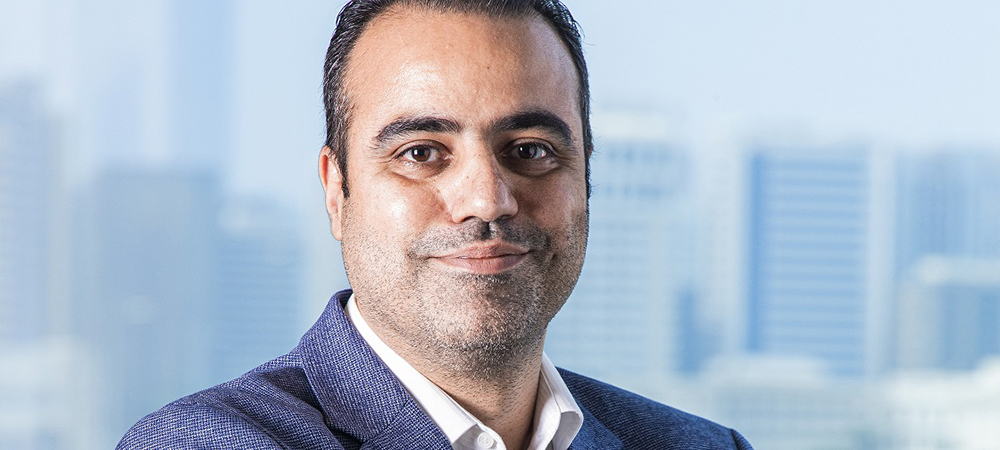The impact of network latency and application downtime has an immediate impact on business performance and customer satisfaction in today’s digital world. Executives from Bespin Global, Cloud Box, NetApp, NETSCOUT, Alteryx share their recommendations.
Managing workloads effectively is crucial for a successful digital transformation. Managed service providers will support organisations in optimising their workloads on the cloud by utilising strategies such as auto-scaling, containerisation, and serverless computing.
By leveraging these technologies, enterprises can dynamically scale resources based on demand, efficiently deploy, and manage containerised workloads, and leverage serverless functions to offload infrastructure management. This approach enables organisations to achieve optimal resource utilisation, improve scalability, and enhance overall workload management in the cloud environment.
Following a comprehensive assessment, commonly known as the Well-Architected review, the chosen managed service provider will proactively present a report of recommendations, including the necessary solutions to effectively manage these pillars and ensure continuous optimisation and uninterrupted operations.
When it comes to security, enterprise CIOs and CTOs must take a layered approach to protect their digital assets. This includes implementing robust perimeter security measures such as firewalls, intrusion detection systems and secure gateways. In addition, endpoint security solutions protect individual devices, while identity and access management tools ensure secure authentication and authorisation of users.
Encryption technologies should also be deployed to protect sensitive data both at rest and in transit. In addition, proactive threat intelligence and security monitoring solutions help detect and mitigate potential security breaches in real time.
CIOs and CTOs should prioritise comprehensive security solutions, invest in data-safeguarding technologies, focus on end-to-end network visibility, monitor sophisticated threats, and adopt AI and ML technologies to manage application availability, performance, and workloads while maintaining network visibility. These measures empower organisations to navigate the complex landscape and ensure seamless operations of essential applications.

Wael Al Aaraj, CTO Bespin Global, an e& enterprise company
As businesses embrace digital transformation, they are moving beyond simple analogue-to-digital substitutions and technology acquisitions. They are adopting a progressive approach that revolutionises their operational landscape by seamlessly integrating digital technology across all aspects of their organisation. To embark on this journey, migrating to the cloud serves as the primary catalyst.
The cloud offers in fact, a wide array of solutions that enable enterprises to ensure the high availability of their applications, optimise performance, enhance security, and accommodate the flexibility and scalability demands of their expanding workloads.
When it comes to these pillars, one of the key challenges faced by CIOs and CTOs is selecting the right technology partner who can effectively assess their application’s infrastructure and identify the appropriate solutions for innovation and securing their business. This partner not only provides top-notch technological solutions but also assists in integrating these technologies into existing processes.
Following a comprehensive assessment, commonly known as the Well-Architected review, the chosen Managed Service Provider will proactively present a report of recommendations, including the necessary solutions to effectively manage these pillars and ensure continuous optimisation and uninterrupted operations.
For application availability and performance, organisations can implement various strategies such as disaster recovery and backup plans, load balancer utilisation, application monitoring, and management tools for continuous performance monitoring, and regular testing and updates with the latest patches to enhance stability.
To enhance application security on the cloud, the MSP will analyse existing architecture and security practices, identify any missing security controls like Web Application Firewalls, Intrusion Prevention Systems, and DevSecOps, and suggest security improvements to minimise the app’s attack surface and further strengthen its security.
In addition to what has been mentioned, managing workloads effectively is crucial for a successful digital transformation. The right MSP will support organisations in optimising their workloads on the cloud by utilising strategies such as auto-scaling, containerisation, and serverless computing.
By leveraging these technologies, enterprises can dynamically scale resources based on demand, efficiently deploy, and manage containerised workloads, and leverage serverless functions to offload infrastructure management. This approach enables organisations to achieve optimal resource utilisation, improve scalability, and enhance overall workload management in the cloud environment.

Ranjith Kaippada, Managing Director, Cloud Box Technologies
As businesses undergo digital transformation, the role of CIOs and CTOs in managing application availability, performance, workloads, and security is becoming increasingly important. To effectively address these challenges, a comprehensive solution suite is essential.
Enterprise CIOs and CTOs need solutions that ensure applications are accessible, responsive, and optimised for end users. Application performance monitoring tools provide real-time visibility into application performance and help identify bottlenecks and optimise resource allocation. In addition, load balancing solutions distribute workloads across servers to prevent performance degradation and ensure high availability.
Robust workload management solutions are essential for CIOs and CTOs to efficiently manage the diverse and growing workloads in their digital enterprises. Cloud orchestration platforms enable seamless management of workloads in hybrid and multi-cloud environments and ensure workload mobility and scalability.
By leveraging automation and resource optimisation capabilities, enterprise CIOs and CTOs can streamline workload management, improve resource utilisation, and effectively meet evolving business needs.
As enterprise applications and data become increasingly distributed, cloud-based solutions play a critical role in managing application availability, performance, workloads, and security. Cloud management platforms enable CIOs and CTOs to monitor and control their cloud resources to ensure optimal performance, cost management and security across public, private and hybrid cloud environments.

Walid Issa, Senior Manager, Solutions Engineering Middle East and Africa, NetApp
As businesses transform into digital enterprises, managing and ensuring application availability, performance, workloads, security, and compliance is becoming crucial for enterprise CIOs and CTOs. NetApp offers various solutions that can help address these aspects. The flagship storage operating system, ONTAP, provides organisations data management capabilities for both on-premises and cloud environments.
It offers features such as high availability, data protection, and data tiering, ensuring application availability and performance optimisation. In addition, our unique cloud solutions extend the capabilities of ONTAP to public cloud platforms, such as AWS, Azure, and Google Cloud. It offers enterprise-grade data management functionalities, including data replication, backup, and disaster recovery, ensuring consistent performance and availability across hybrid multicloud environments.
NetApp Cloud Insights’ monitoring and analytics tool will help CIOs and CTOs gain visibility into their infrastructure, optimise resource utilisation, and identify performance bottlenecks. It also provides proactive alerts and recommendations for improving application performance. And from data security perspective, NetApp offers anti-ransomware, data encryption, access controls, and monitoring.
These solutions help enterprises protect their data from unauthorised access, maintain compliance with regulations, and mitigate data breach risks. NetApp Data Sense solution can assist organisations in achieving compliance requirements on-premises and in the cloud. It offers pre-built compliance templates and automation tools to simplify the process of adhering to industry-specific regulations and security standards.

Gaurav Mohan, VP SAARC, and Middle East, NETSCOUT
Digital transformation has made data a key driver of business success. As more organisations turn to technologies that analyse and extract data, investing in solutions that safeguard this critical asset becomes non-negotiable. CIOs and CTOs must prioritise technologies that protect data integrity and confidentiality, ensuring the availability and reliability of essential applications.
With the increasing complexity of application delivery, organisations need a comprehensive approach to performance management that covers all access points, maintaining end-user experiences while ensuring quality service delivery. This approach must extend across geographical borders, catering to users working from home offices, field locations, or corporate headquarters.
Cloud computing and hybrid-cloud solutions are becoming increasingly popular as they promise cost reduction and improved operational efficiency. However, these solutions also pose broader security threats that IT decision-makers must manage.
Comprehensive end-to-end network visibility solutions, therefore, become a priority to mitigate such risks. This visibility gives organisations the necessary insights to secure their data while leveraging the benefits of cloud technologies. It is equally critical to monitor sophisticated threats, correlate intelligence, and stay up to date with evolving tactics, techniques, and processes among adversaries to counter their attacks proactively.
CIOs and CTOs should prioritise comprehensive security solutions, invest in data-safeguarding technologies, focus on end-to-end network visibility, monitor sophisticated threats, and adopt AI and ML technologies to manage application availability, performance, and workloads while maintaining network visibility. These measures empower organisations to navigate the complex landscape and ensure seamless operations of essential applications.

Karl Crowther, VP MEA, Alteryx
Faced with making decisions against a constant backdrop of economic uncertainty, every forward-thinking company is accelerating the pace of digital transformation. Given the sprawl of the modern tech stack, forward-thinking enterprise CIOs and CTOs are gravitating towards approachable platform technologies that deliver ROI. Decision-makers striving to break free from uncertainty are able to do so through accessible, platform-agnostic technologies that enable them to become nimble and efficient in their daily decision-making.
Cloud analytics is a game-changer when it comes to unlocking the potential of data, and the scalability of cloud compute power – both needed to deliver insights at speed.
This scaling capability of the cloud can be important when analysing large datasets, particularly where significant compute resources are needed for a short period of time, but peak load is not needed consistently.
With so much available data, there is a clear link between utilising the cloud to store data and leveraging its compute power to empower everyone across the enterprise to transform data into insights.
By supercharging speed of execution and ease of use via access to browser-based self-service analytics across the enterprise at scale business leaders can put data-driven insights at the heart of decision-making and drive deeper insights to respond to multifaceted challenges quickly.
CIOs and CTOs can consolidate the number of technologies and ensure they have agile and scalable solutions that can automate for efficiency.
Click below to share this article

